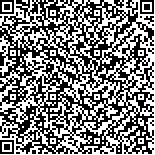孙志成,马金霖,顾晓美,等.基于虚拟现实的八段锦锻炼对养老院轻度认知障碍老年患者的影响[J].中华物理医学与康复杂志,2021,43(4):322-326
扫码阅读全文

|
| 基于虚拟现实的八段锦锻炼对养老院轻度认知障碍老年患者的影响 |
|
| |
| DOI:10.3760/cma.j.issn.0254-1424.2021.04.007 |
| 中文关键词: 虚拟现实 八段锦 轻度认知障碍 养老院老年人 体医结合 |
| 英文关键词: Virtual reality Baduanjin Cognitive impairment Elderly Nursing homes Qigong |
| 基金项目:国家重点研发计划资助项目(2018YFC2001600;2018YFC2001603);2018年度江苏卫生健康职业学院院级科研项目(JKPY1810);江苏高校品牌专业建设工程资助项目(TAPP);江苏省老年医学学会2019年度老年医学科技发展基金(医养结合)专项项目(JGS2019ZXYY03) |
|
| 摘要点击次数: 7462 |
| 全文下载次数: 8769 |
| 中文摘要: |
| 目的 观察基于虚拟现实(VR)的八段锦对养老院老年轻度认知障碍(MCI)患者认知功能、躯体功能和生活质量的影响。 方法 选取养老院老年MCI患者57例,按随机数字表法分为观察组29例和对照组28例。对照组接受养老院的常规服务和健康宣教,观察组在对照组干预方法的基础上增加基于VR的八段锦训练,每次50 min,每周训练3次,共训练24周。于干预前和干预24周后(干预后),分别对2组患者进行认知功能评定[包括蒙特利尔认知评估量表(MoCA)、Rivermead行为记忆测验第2版(RBMT-Ⅱ)、数字符号转换测验(DSST)和连线测验(TMT)]、躯体功能评定[简易躯体执行能力测试量表(SPPB)]和生活质量评定[老年性痴呆生存质量量表(QOL-AD)]。 结果 干预后,观察组患者的MoCA评分、RBMT-Ⅱ评分、DSST测试和TMT-A测试结果较组内干预前均有显著改善(P<0.05),且观察组干预后的上述指标均优于对照组干预后,差异均有统计学意义(P<0.05)。干预后,观察组患者的SPPB总分、5次坐-站、串联站立和2.44 m行走测试结果均显著优于组内干预前和对照组干预后,差异均有统计学意义(P<0.05)。干预后,观察组患者的QOL-AD评分为(39.31±7.04)分,与组内干预前和对照组干预后比较,差异均有统计学意义(P<0.05)。 结论 基于VR的八段锦可有效地改善养老院MCI老年患者的认知功能和躯体功能,提高其生命质量。 |
| 英文摘要: |
| Objective To explore the effect of virtual reality (VR)-based baduanjin exercise on the cognition, physical functioning and life quality of elderly persons with mild cognitive impairment (MCI). Methods Fifty-seven mildly impaired elderly persons were randomly divided into an observation group (n=29) and a control group (n=28). Both groups were given routine care and health education in their nursing homes, while the observation group additionally performed 50 minutes of VR baduanjin exercise three times a week for 24 weeks. Both groups were assessed using the Montreal cognitive assessment (MoCA), the Rivermead behavioural memory test (second edition) (RBMT-Ⅱ), a digit-symbol substitution test (DSST) and the Trail Making Test (TMT). The short physical performance battery (SPPB) and Alzheimer′s disease quality of life (QOL-AD) instrument were also administered before and after the 24-week intervention. Results After the intervention the average MoCA, RBMT-Ⅱ, DSST, TMT-A, SPPB and QOL-AD results of the observation group were all significantly better than before the intervention and better than the control group′s averages. The observation group also performed better on the 5 times sit-to-stand test, the tandem standing test and a walking speed test after the intervention. Conclusions VR-based baduanjin practice can effectively improve the cognition and physical functioning of mildly impaired elderly persons, as well as improving their quality of life. |
|
查看全文
查看/发表评论 下载PDF阅读器 |
| 关闭 |